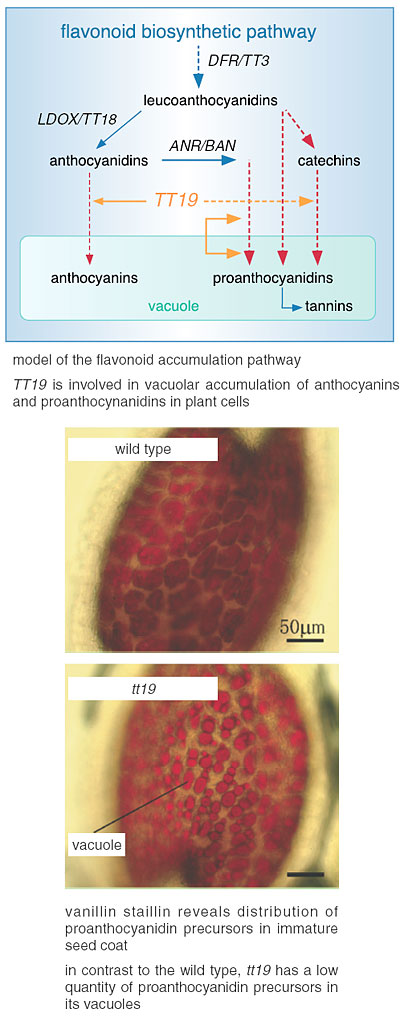Flavonoids such as anthocyanins and tannins are major pigmentation compounds in plants. Anthocyanins contribute to sepal color of numerous plant species, such as the blue to purple-red coloration in hydrangeas and roses. Catechins and tannins are also known as the astringent compounds in tea leaves and persimmons. These compounds are included in a category of polyphenols that have been suggested to have beneficial effects on human health.
We have isolated a novel flavonoid gene, TT19, from the model plant Arabidopsis through carbon ion mutagnesis. The TT19 gene encodes a glutathione S-transferase (GST)-like protein. Molecular and physiological analyses have revealed that the TT19 gene is required for vacuolar accumulation of anthocyanins as well as proanthocyanidins (Fig. 6-10 left).
In a loss-of-function mutant for the TT19 gene (the tt19 mutant), vacuolar accumulation of both anthocyanins and proanthocyanidins is abnormal (Fig. 6-10 right). Although an AN9 which is only involved in the anthocyanin pathway has been isolated from petunia, TT19 is the first gene that also participates in the proanthocyanidin pathway in plants.
Regulation and/or manipulation of the TT19 gene will be helpful for future exploration of plants with novel flower colors and with a high content of antioxidant compounds.
|
